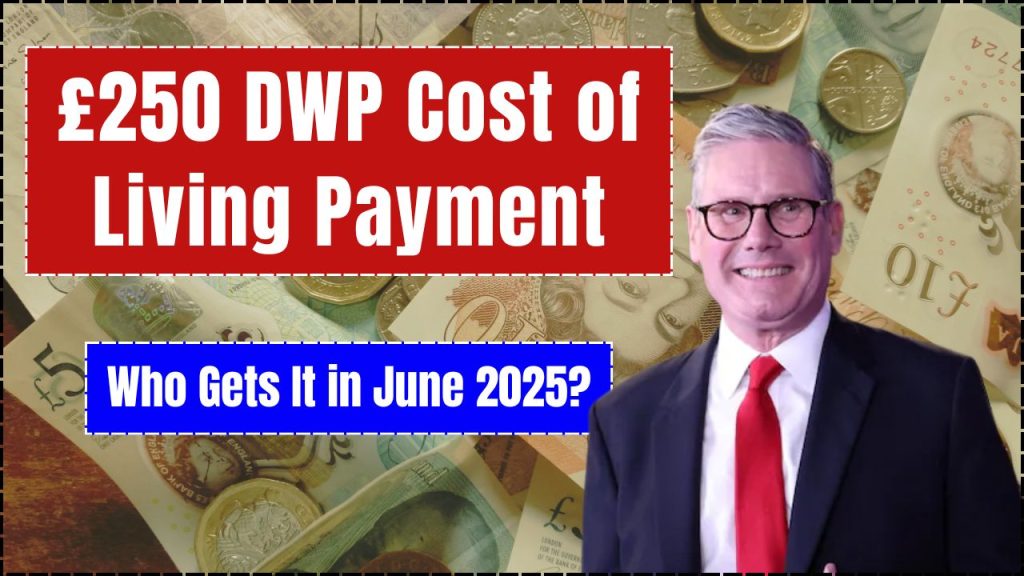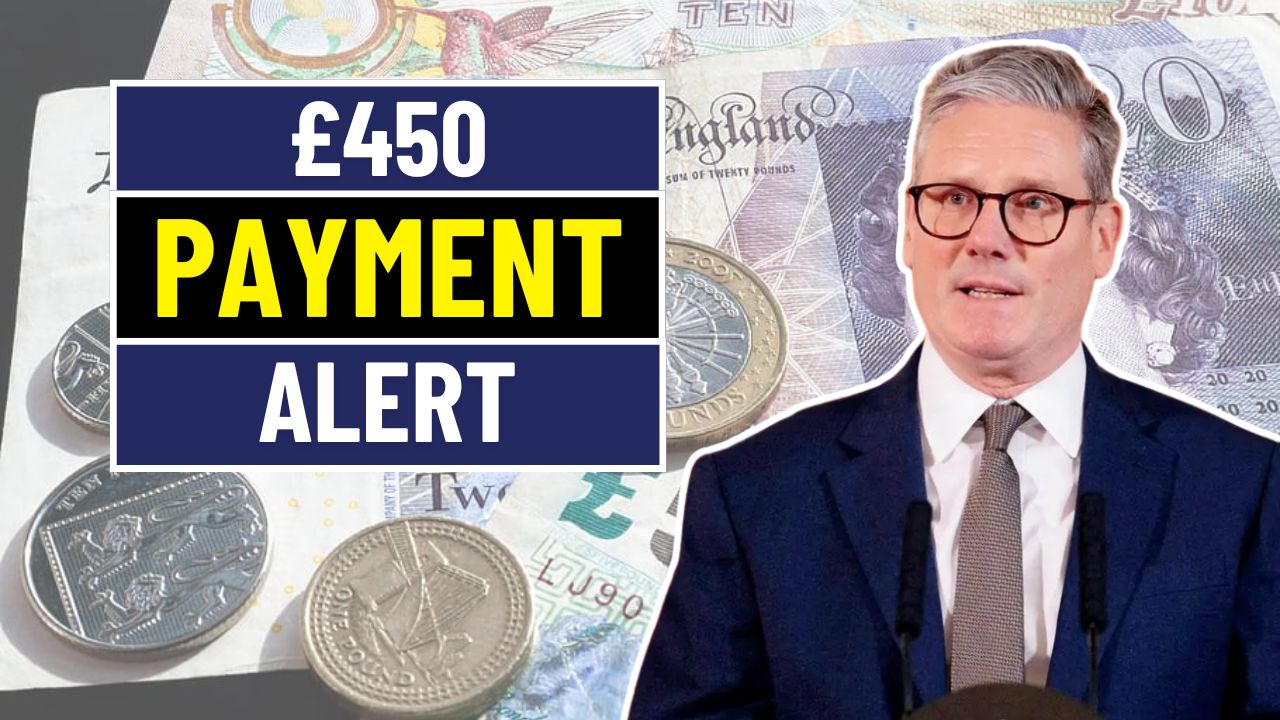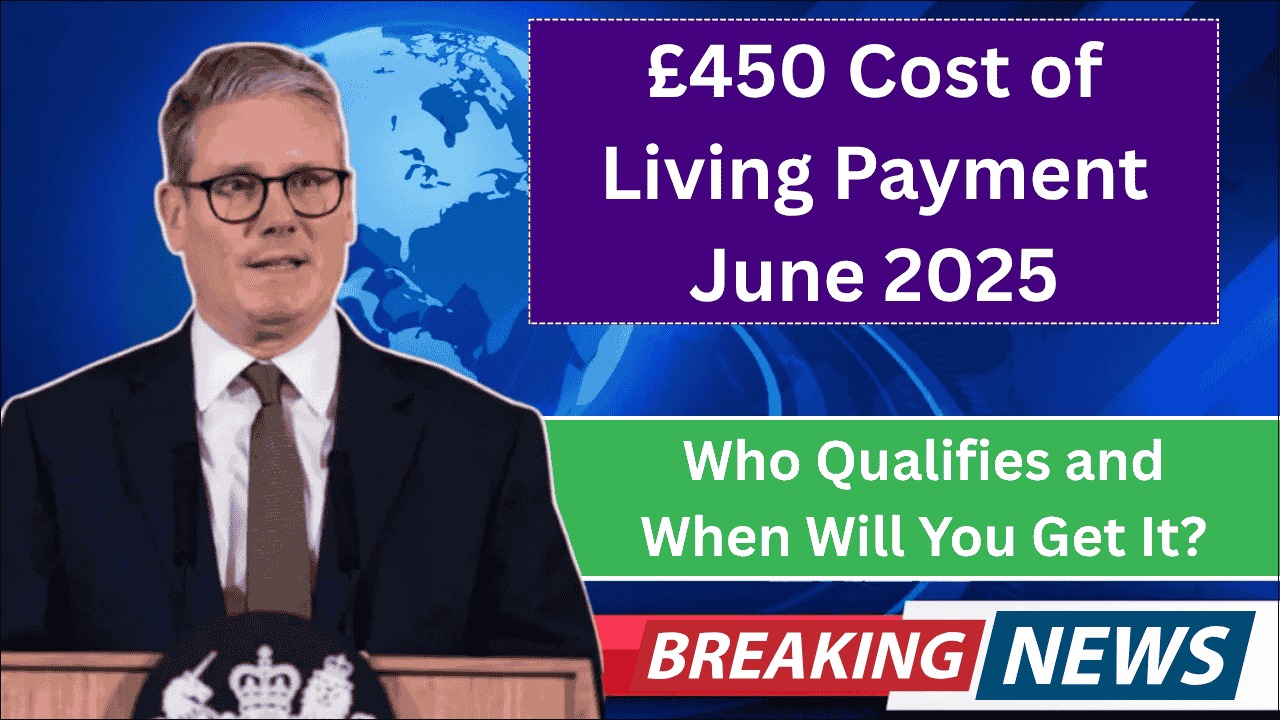
The Department for Work and Pensions (DWP) has announced a crucial financial lifeline for struggling households across the UK with the confirmation of a £250 Cost of Living Payment scheduled for June 2025. This targeted support comes at a time when families continue to face significant pressure from rising energy bills, escalating food prices, and persistent inflation-driven expenses that have stretched household budgets to breaking point.
This mid-year payment represents a significant development in the government’s ongoing commitment to supporting low-income families through challenging economic times. Unlike previous cost of living payments, this June 2025 installment operates under updated benefit thresholds and revised eligibility criteria, making it essential for potential recipients to understand the new framework thoroughly.
Table of Contents
£250 DWP Cost of Living Payment June 2025
The one-off, tax-free payment of £250 will be automatically deposited into eligible recipients’ bank accounts, with the payment window opening on June 10, 2025, and expected to conclude by the end of June. This automatic payment system ensures that those who qualify won’t need to submit applications or complete additional paperwork to receive their support.
The payment forms part of the broader DWP support June initiative, which encompasses various measures designed to provide financial relief to vulnerable households during a period of continued economic uncertainty. The timing of this payment is particularly strategic, coinciding with the summer holiday season when families often face additional childcare costs and increased living expenses.
Complete Eligibility Requirements for June 2025
To qualify for the £250 DWP Cost of Living Payment in June 2025, recipients must have been actively receiving at least one qualifying benefit during the specific qualifying period, which runs from April 10 to May 9, 2025. This narrow qualification window emphasizes the importance of maintaining continuous benefit claims during this critical period.
Qualifying Benefits Include:
- Universal Credit – Recipients must have had an eligible assessment period during the qualifying timeframe. It’s important to note that some Universal Credit claimants may be excluded based on their earnings levels, so not all Universal Credit recipients will automatically qualify.
- Income-based Jobseeker’s Allowance (JSA) – Only the income-based version qualifies for this payment. Those receiving contribution-based JSA alone will not be eligible unless they also receive income-based benefits.
- Income-related Employment and Support Allowance (ESA) – Similar to JSA, only the income-related version qualifies. Contribution-only ESA recipients are excluded from this payment unless combined with other eligible benefits.
- Income Support – All Income Support recipients who had active claims during the qualifying period are automatically included in the payment scheme.
- Pension Credit – Eligible claimants must have had an active Pension Credit claim within the qualifying period from April 10 to May 9, 2025.
- Child Tax Credit or Working Tax Credit – These HMRC-administered benefits qualify for the payment, with HMRC handling the distribution rather than the DWP.
Important Exclusions
A critical point for potential recipients to understand is that contribution-based benefits such as New Style ESA or contribution-based JSA do not qualify for this payment when received alone. These benefits only count toward eligibility when paired with income-based benefits during the qualifying period.
Payment Timeline and Distribution Method
The DWP has established a clear timeline for the distribution of the £250 Cost of Living Payment, with most eligible claimants receiving their payment between June 10 and June 30, 2025. The automatic nature of this payment system means that eligible recipients should not take any action to claim the money – it will appear in their accounts without any application process.
Payment References and Identification
Recipients can identify their Cost of Living Payment in their bank statements through specific reference codes:
- DWP recipients will see the reference “DWP COL SUM25”
- Tax credit recipients will see “HMRC COL SUM25”
For couples or households with joint benefit claims, only one payment per household will be issued, avoiding duplication while ensuring that eligible households receive their full entitlement.
Comprehensive Eligibility Table
| Benefit Type | Eligible for £250 Payment? | Important Notes |
|---|---|---|
| Universal Credit | Yes | Must have eligible assessment period; some earnings-based exclusions apply |
| Income-based JSA | Yes | Contribution-based JSA excluded unless paired with income-based benefits |
| Income-related ESA | Yes | Contribution-only ESA excluded unless combined with qualifying benefits |
| Income Support | Yes | All recipients with active claims during qualifying period included |
| Pension Credit | Yes | Claim must have been active between April 10 – May 9, 2025 |
| Child Tax Credit | Yes | Payment administered by HMRC, not DWP |
| Working Tax Credit | Yes | Payment administered by HMRC, not DWP |
| Contribution-based JSA (only) | No | Must be combined with income-based support to qualify |
| Contribution-based ESA (only) | No | Must be combined with income-based support to qualify |
Why This £250 Support Matters in 2025
The timing and amount of this Cost of Living Payment reflect the government’s recognition of the ongoing financial challenges facing UK households. With inflation continuing to impact essential goods and services, wages remaining stagnant across many sectors, and energy costs maintaining pressure on household budgets, this £250 injection provides crucial breathing room for families struggling to make ends meet.
The payment’s arrival during the summer months is particularly significant, as this period often brings additional financial pressures for families. School holidays mean increased childcare costs, higher food bills with children at home, and often additional expenses related to summer activities and necessities. The £250 payment helps address these seasonal financial pressures while providing general cost-of-living relief.
This June payment is part of a broader DWP support package that includes ongoing reforms within the benefits system. While rumors persist about a possible autumn payment later in 2025, the government has not yet confirmed additional Cost of Living Payments beyond this June installment.
What to Do If Your Payment Doesn’t Arrive
Despite the automatic nature of this payment system, some eligible recipients may experience delays or missing payments. If you believe you qualify for the £250 Cost of Living Payment but haven’t received it by July 1, 2025, there are specific steps you should take to resolve the issue.
Reporting Missing Payments
Recipients who don’t receive their expected payment should report the missing payment through the official DWP online portal. Before reporting, ensure that your bank details are current and that your benefit records are up to date, as incorrect information can cause payment delays.
Important Warnings
The DWP takes fraudulent claims and misreporting very seriously. Claimants who attempt to fraudulently claim payments they’re not entitled to may face significant consequences, including demands for repayment and potential penalties. It’s crucial to only report genuinely missing payments and to ensure you meet all eligibility criteria before expecting payment.
Key Reminders for Recipients
This £250 Cost of Living Payment represents targeted government support designed to help the most vulnerable households manage ongoing financial pressures. The payment’s tax-free status means recipients won’t need to declare it as income, and it won’t affect other benefit entitlements.
Recipients should remember that this is a one-off payment for June 2025, and while additional support may be announced later in the year, there are currently no confirmed plans for further Cost of Living Payments in 2025 beyond this June installment.
The automatic payment system ensures that eligible recipients receive their support without bureaucratic barriers, but it also means that maintaining accurate benefit records and current bank details is essential for successful payment receipt.
Conclusion
The £250 DWP Cost of Living Payment for June 2025 represents a vital support measure for millions of UK households facing continued financial pressure from inflation and rising living costs. By understanding the specific eligibility requirements, payment timeline, and what to do if issues arise, recipients can ensure they receive this crucial financial support.
The targeted nature of this payment, focusing on income-based benefits rather than contribution-based support, reflects the government’s commitment to directing help toward those most in need of financial assistance. As households continue to navigate economic challenges, this payment provides essential breathing room during the summer months when additional expenses often strain family budgets.
For the most current information and updates about Cost of Living Payments and other government support measures, visit the official GOV.UK benefits information page, or check the DWP Cost of Living support page for the latest announcements and guidance.
Key Questions
Q: Do I need to apply for the £250 Cost of Living Payment?
A: No, eligible recipients will receive the payment automatically between June 10-30, 2025.
Q: Will contribution-based JSA or ESA recipients get this payment?
A: No, unless they also receive income-based benefits during the qualifying period.
Q: When should I contact DWP if I don’t receive my payment? Contact DWP through their online portal if you haven’t received payment by July 1, 2025.
Q: How will the payment appear on my bank statement?
A: Look for “DWP COL SUM25” or “HMRC COL SUM25” depending on your benefit type.







